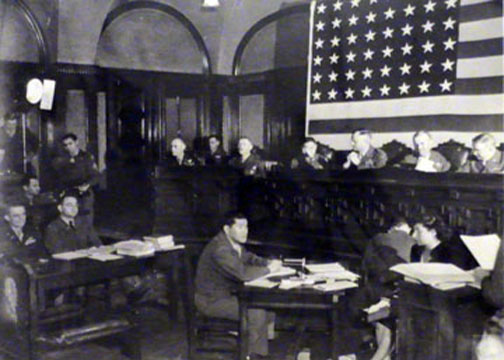In Their Own Words
 Sunday, October 16, 2011 at 02:41PM
Sunday, October 16, 2011 at 02:41PM 1st Lt. John Yee
WWII
China/Burma/India
Interpreter
Chinese Air Force attached to the American Volunteer Group (AVG) Flying Tigers
Kunming, China, Tsuyung, China, India, various U.S. Air Bases
Intel made all the difference
In 1941, Japan occupied most of China. Bombing raids leveled towns and villages, killing thousands of people with alarming frequency. China only had a handful of WWI airplanes for defense. The Japanese met with little resistance.
With help from Chenault, the Chinese created a warning system for protection from the Japanese air attacks.
First, Chenault sent reconnaissance planes out to spot Japanese planes. Second, if planes were spotted, officials in the threatened towns hung a red ball at the police stations, which meant get out of town. And finally, if the sirens wailed, you were to hide fast, because a strike was imminent and you were probably going to be killed.
Interpreter John Yee, stationed on the newly devised radio network, found himself translating critical information between ground operations and Chenault’s new secret weapon - the Flying Tigers. . .
In Their Own Words briefly describes a specific historical story told during an APHA interview that is used as short stories for the media.
In Their Own Words
 Sunday, October 16, 2011 at 02:31PM
Sunday, October 16, 2011 at 02:31PM Tech Sgt. Sueo Ito
U.S. Army
WWII
Military Intelligence Service (MIS)
AFPAC Headquarters, Manilla, Phillipines, 8th Army Headquarters Yokohoma, Japan
 The witness pointed at Ito
The witness pointed at Ito
The war was over and the Japanese war crimes trial for General Yamashita was underway with Tech Sgt. Ito seated in the middle of the courtroom serving as translator.
The 43 international war correspondents covering the trial were polled to see if they thought Yamashita was personally guilty of the war crimes charges brought against him. Unanimously, they said no.
Rumor had it that General McArthur was jealous of Yamashita’s accomplishments, and had decided before the trial even began, that Yamashita should die by hanging - the most dishonorable death for a Japanese.
During the trial, a Phillipino woman who was a witness to some of the Japanese atrocities, was asked to point out General Yamashita to the Court. The woman, pointing directly at Tech Sgt. Ito, confidently, identified him as Yamashita. The Prosecuter stated “Let the records show the witness has pointed to the accused. . .”
In Their Own Words briefly describes a specific historical story told during an APHA interview that is used as short stories for the media.
In Their Own Words
 Sunday, October 16, 2011 at 02:23PM
Sunday, October 16, 2011 at 02:23PM Russ Thomas
U.S. Navy
WWII
Alaska, Phillipines, Guam, Tinian
Of Runways and Babies
The runway was finished, but the lights still needed to be hooked up. In the dark Alaskan months, that was a critical factor.
The engineers were enjoying a break from work, warm in the barracks when the sound of a plane circling the area sent them outside to check it out. Friend or enemy was impossible to determine, but Russ ordered the men to line the runway with jeeps, armed and ready, lighting the newly made runway, just in case it was one of ours in trouble.
Landing without incident, the pilot and his passenger, a doctor, expressed their heartfelt thanks to the corpsmen, explaining the airstrip was marked on his new map, but they couldn’t see the landing strip until they saw the lights. Almost out of fuel, they would have crashed had the engineers not showed them the way.
The next morning the pilot stepped outside of the barracks to check his plane and promptly fainted when he saw how close they had come to crashing into the steep mountain ranges circling the runway.
Years later and back in the US, Russ’ pregnant wife was having a checkup with a new doctor who had a beautiful picture of a snowy mountain range hanging on the wall in his office. Commenting about the picture, he told her his story about landing on an airstrip in the dead of night. . .
Their Own Words briefly describes a specific historical story told during an APHA interview that is used as short stories for the media.
